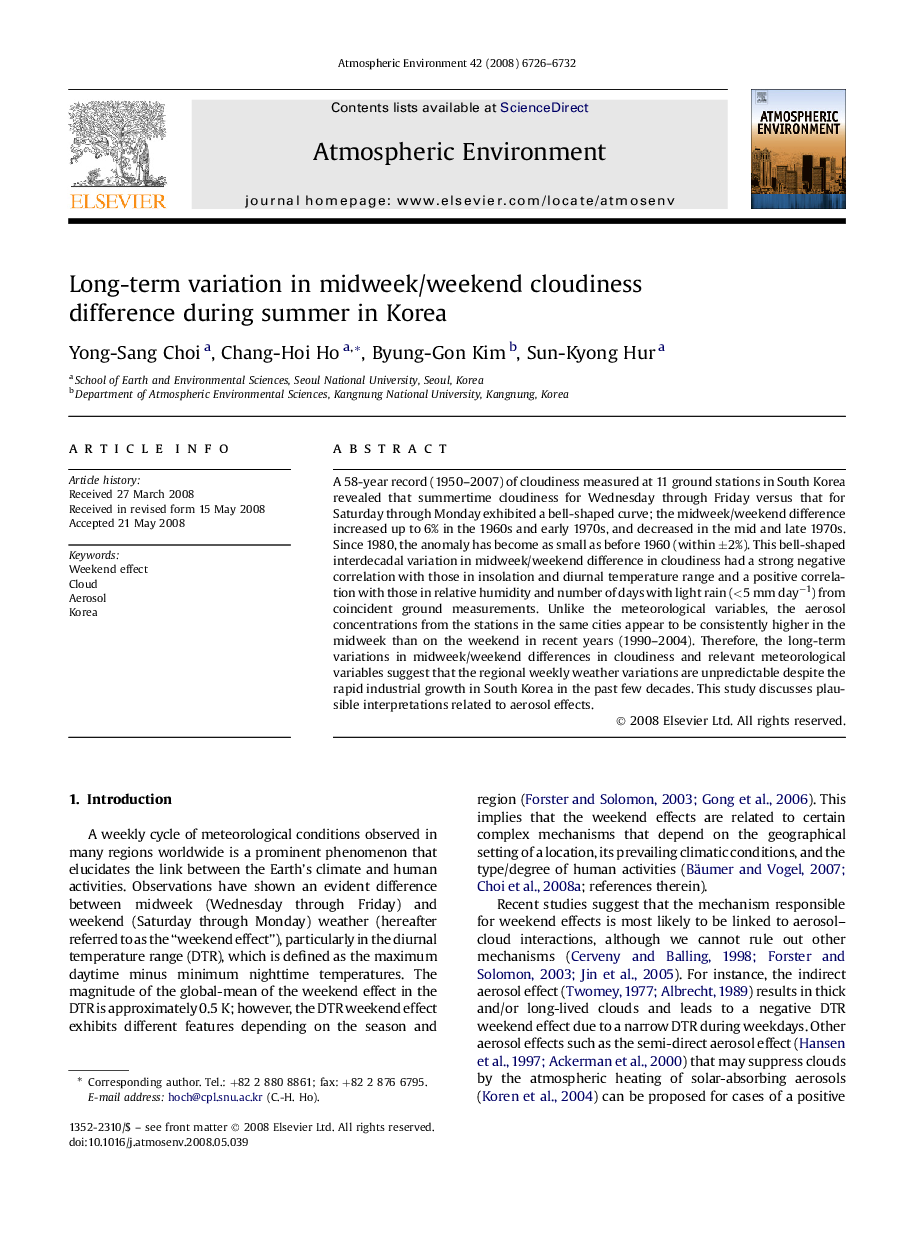| Article ID | Journal | Published Year | Pages | File Type |
|---|---|---|---|---|
| 4441771 | Atmospheric Environment | 2008 | 7 Pages |
A 58-year record (1950–2007) of cloudiness measured at 11 ground stations in South Korea revealed that summertime cloudiness for Wednesday through Friday versus that for Saturday through Monday exhibited a bell-shaped curve; the midweek/weekend difference increased up to 6% in the 1960s and early 1970s, and decreased in the mid and late 1970s. Since 1980, the anomaly has become as small as before 1960 (within ±2%). This bell-shaped interdecadal variation in midweek/weekend difference in cloudiness had a strong negative correlation with those in insolation and diurnal temperature range and a positive correlation with those in relative humidity and number of days with light rain (<5 mm day−1) from coincident ground measurements. Unlike the meteorological variables, the aerosol concentrations from the stations in the same cities appear to be consistently higher in the midweek than on the weekend in recent years (1990–2004). Therefore, the long-term variations in midweek/weekend differences in cloudiness and relevant meteorological variables suggest that the regional weekly weather variations are unpredictable despite the rapid industrial growth in South Korea in the past few decades. This study discusses plausible interpretations related to aerosol effects.
